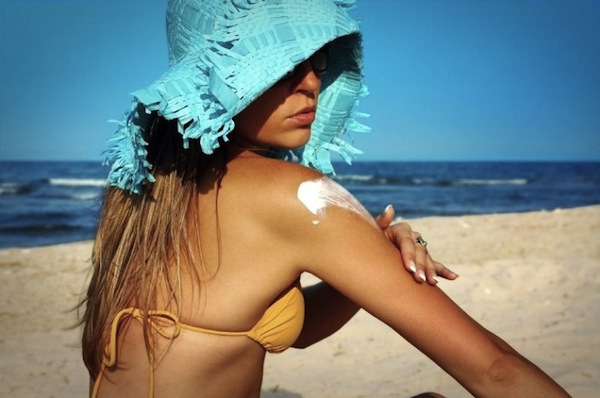 I'm completely obsessed with knowing everything there is to know about my skin, aging, sun damage and SPF. My derm, Dr. Ilyse Lefkowicz, can back me up on that as I'm constantly picking her brain and bugging her for more and more info. My days basking the sunshine are over and I now understand everything there is to know about protection – sun protection to ensure I don't age any quicker and never welcome skin cancer. Of course, I had to share her knowledge with you, because it's beyond interesting and helpful.
Incidental sun exposure received during everyday activities accounts for approximately 80% of an individual’s lifetime exposure," states Dr. Ilyse Lefkowicz. "Therefore, I always recommend applying a broad-spectrum sunscreen with an SPF of 30 or higher on a daily basis in order to help prevent skin cancer and aging."
I'm completely obsessed with knowing everything there is to know about my skin, aging, sun damage and SPF. My derm, Dr. Ilyse Lefkowicz, can back me up on that as I'm constantly picking her brain and bugging her for more and more info. My days basking the sunshine are over and I now understand everything there is to know about protection – sun protection to ensure I don't age any quicker and never welcome skin cancer. Of course, I had to share her knowledge with you, because it's beyond interesting and helpful.
Incidental sun exposure received during everyday activities accounts for approximately 80% of an individual’s lifetime exposure," states Dr. Ilyse Lefkowicz. "Therefore, I always recommend applying a broad-spectrum sunscreen with an SPF of 30 or higher on a daily basis in order to help prevent skin cancer and aging."
When shopping for SPF you want to look for three things:
- Broad-spectrum protection (protects against UVA and UVB rays)
- Sun Protection Factor (SPF) 30 or greater
- Water resistance
Broad spectrum is super important (UVA and UVB coverage) because the different types of rays do different types of damage that can both lead to skin cancer. UVA rays can prematurely age your skin, causing wrinkles and age spots and can pass through window glass. UVB rays are the primary cause of sunburn and are blocked by window glass.
"Because most people don’t apply sunscreen the way they are supposed to (most apply less than 1/4 of the amount they should, , I always advise my patients to use a higher SPF," Dr. Lefkowicz comments. The proper dosage is about a shot glass full, or an ounce, to cover your entire body.
To break it down, Lefkowicz explains that SPF not only indicates how much longer protected skin can resist getting red than unprotected skin, but also what percentage of UV rays are screened. An SPF 15 screens 93% of UV rays whereas an SPF 50 protects against 98% UV rays. Her thoughts on an SPF 100? Well, doubtful it can do much better than 50.
Beginning in 2013, you’ll see several changes to sunscreen labels required by the FDA.
- For a sunscreen to carry the claim that it can prevent skin cancer and sunburn, it must offer both: 1) broad-spectrum coverage 2) an SPF of 15 or higher.
- The FDA will ban companies from claiming that a sunscreen is “waterproof” or “sweat proof.” This is simply not possible. You’ll now see the term “water resistant.” The label also must state how long the water resistance lasts, either 40 or 80 minutes.




















